MIPS is here. The effects are real. And it’s not exactly simple. We know your time is valuable, so let us do the hard part for you. We’ve studied the ins-and-outs and summarized it here and throughout our site. Read through our breakdown and take action (if needed) to protect your bottom-line. And feel free to contact us directly for more assistance. We’re here to help.
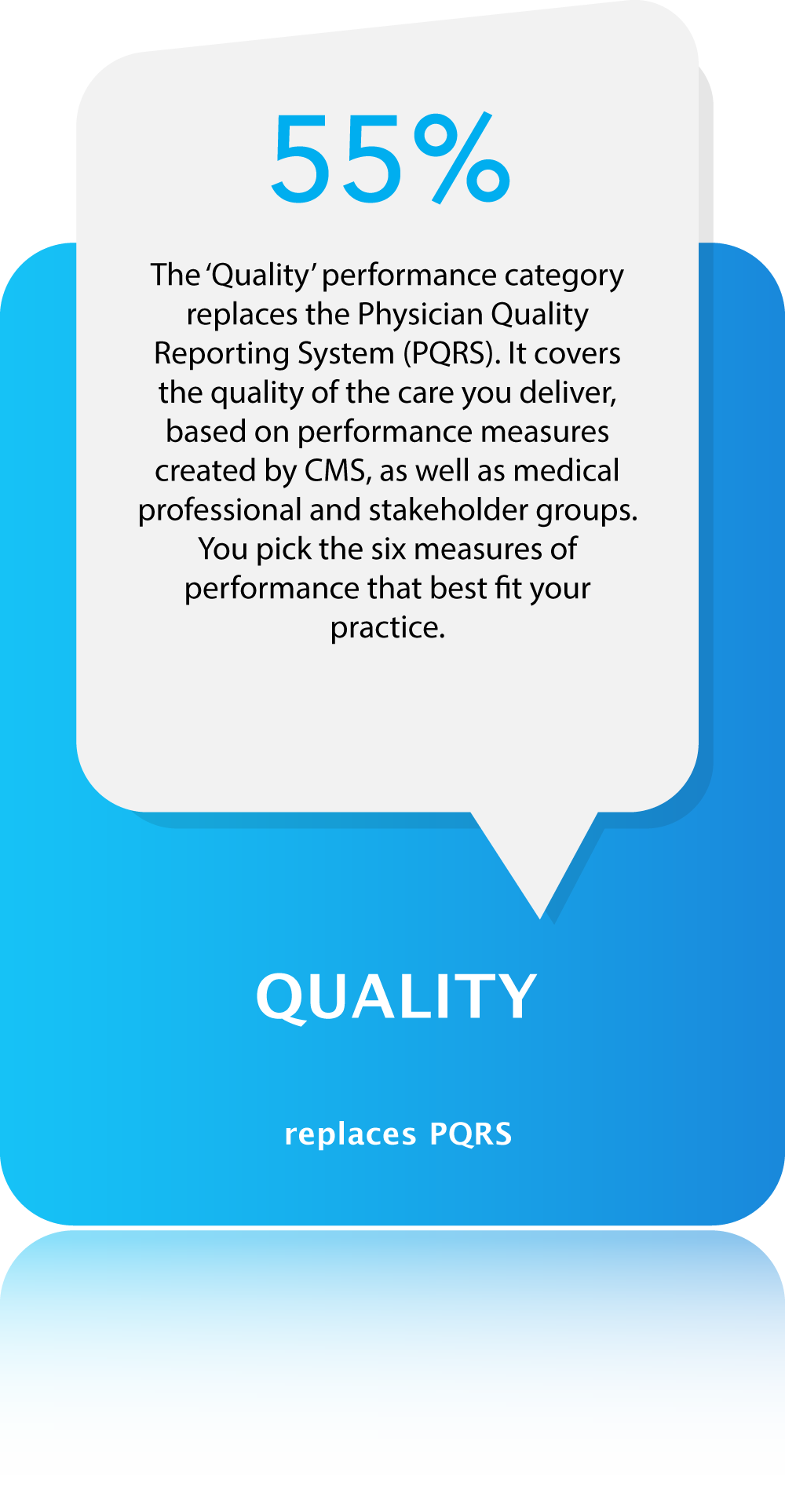
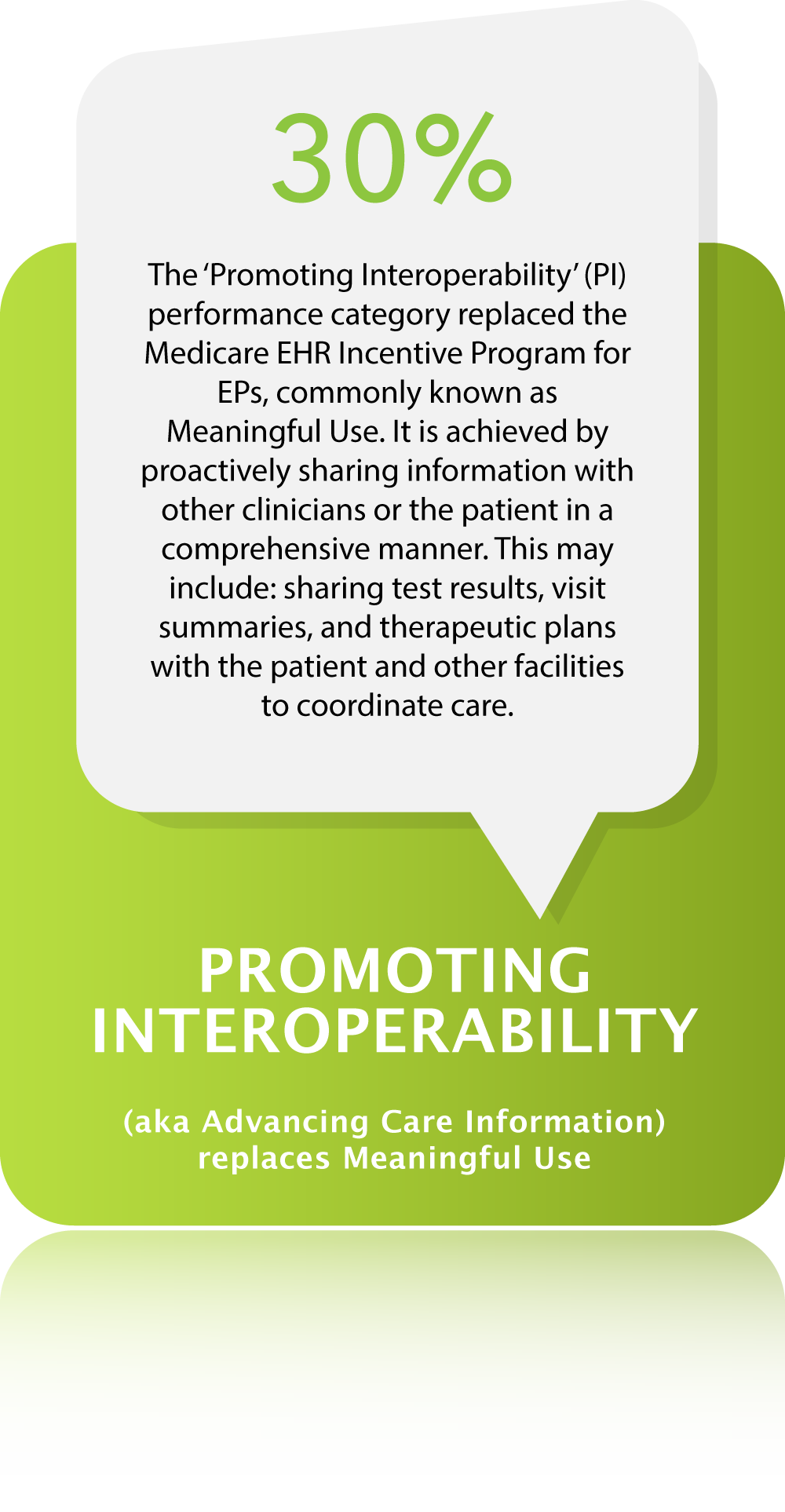
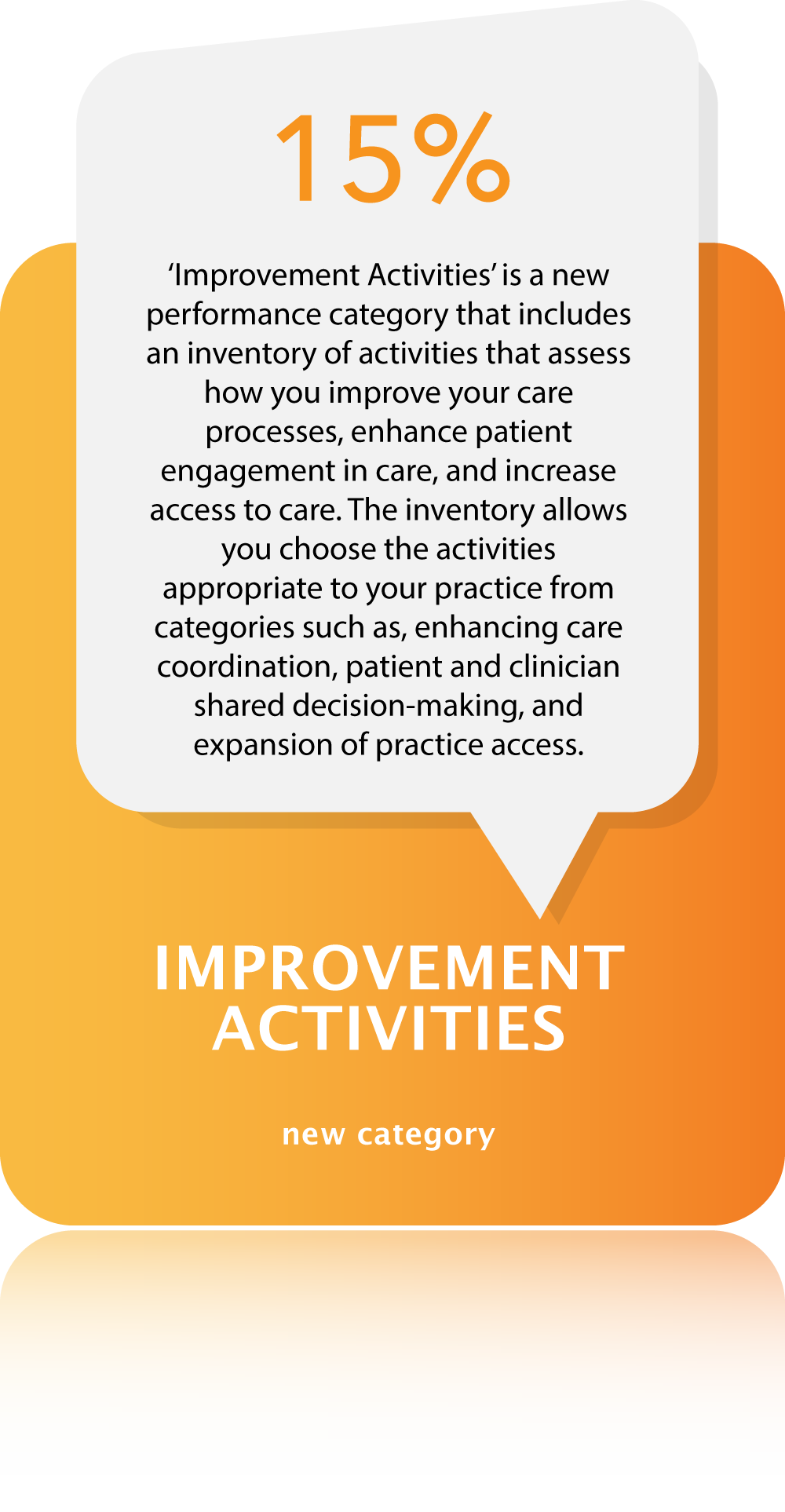
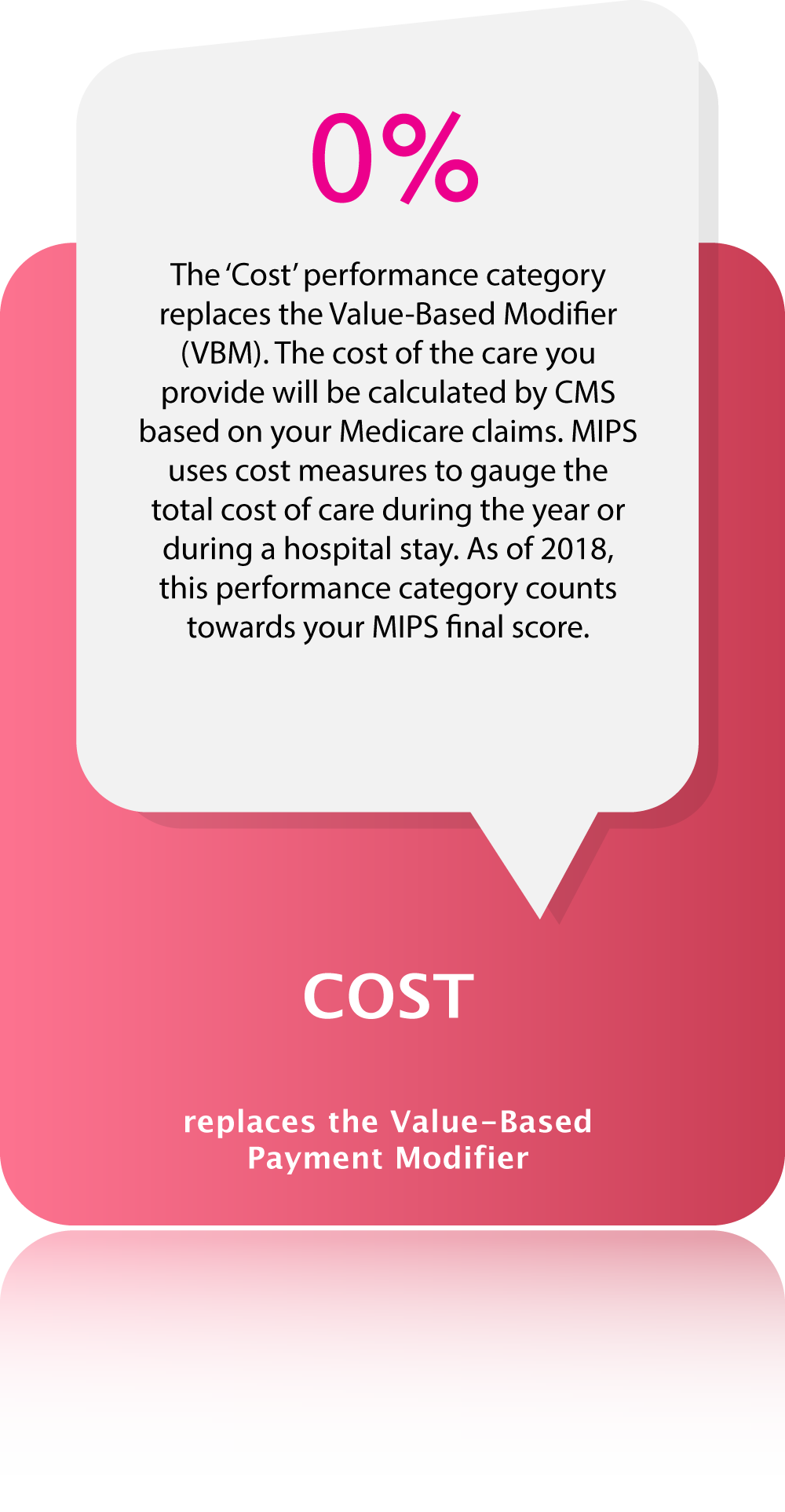




Text Version of Above MIPS Performance Categories
The ‘Quality’ performance category replaces the Physician Quality Reporting System (PQRS). It covers the quality of the care you deliver, based on performance measures created by CMS, as well as medical professional and stakeholder groups. You pick the six measures of performance that best fit your practice.
The ‘Promoting Interoperability’ (PI & aka Advancing Care Information) performance category replaced the Medicare EHR Incentive Program for EPs, commonly known as Meaningful Use. It is achieved by proactively sharing information with other clinicians or the patient in a comprehensive manner. This may include: sharing test results, visit summaries, and therapeutic plans with the patient and other facilities to coordinate care.
‘Improvement Activities’ is a new performance category that includes an inventory of activities that assess how you improve your care processes, enhance patient engagement in care, and increase access to care. The inventory allows you choose the activities appropriate to your practice from categories such as, enhancing care coordination, patient and clinician shared decision-making, and expansion of practice access.
The ‘Cost’ performance category replaces the Value-Based Modifier (VBM). The cost of the care you provide will be calculated by CMS based on your Medicare claims. MIPS uses cost measures to gauge the total cost of care during the year or during a hospital stay. As of 2018, this performance category counts towards your MIPS final score.

If you report MIPS data in as an individual, your payment adjustment will be based only on your performance. An individual is defined as a single NPI tied to a single TIN.

If you report MIPS data with a group, your payment adjustment is based on the group’s performance. A group is defined as a set of clinicians – identified by their National Provider Identifier (NPI) – sharing a common Taxpayer Identification Number (TIN), no matter the specialty or practice site.

A Virtual Group is a combination of two or more Taxpayer Identification Numbers (TINs) made up of solo practitioners and groups of 10 or fewer eligible clinicians who come together “virtually” (no matter specialty or location) to participate in MIPS for a performance period of a year.

MIPS 2019 is here. It may seem too soon, as some clinicians are still finishing their reporting for the MIPS 2018 performance year. However, the time has come. The Quality performance category requires clinicians to report a full year’s worth of data. So, the sooner providers start, the better. To help you get going […]
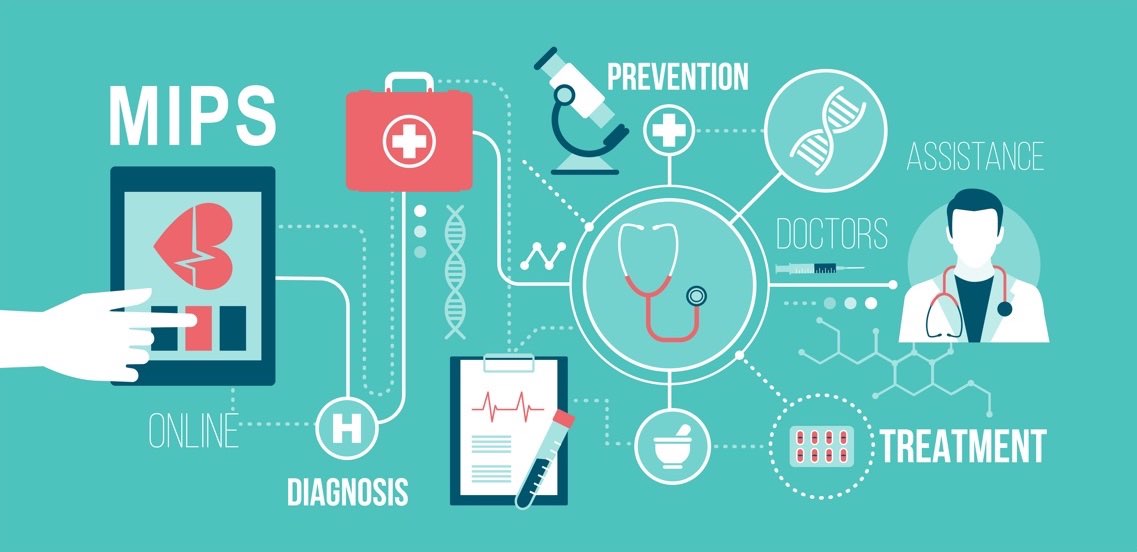
The purpose of this post is to walk you everything you need to know in order to successfully participate in MIPS for the 2018 performance year. Whether you’re relatively fluent in MIPS or a complete beginner, we hope you’ll leave with a general understanding of the MIPS system and what’s required of you. If […]

In previous posts, we have discussed the MIPS Eligibility Online Lookup Tool, where providers can enter their NPI numbers and find out their MIPS eligibility status. Well, the CMS has officially released a new version for 2018. With it, providers can discover their participation status for the MIPS 2018 performance year, and therefore determine […]

A management and billing staff consisting of the most experienced individuals in the Industry.
Learn More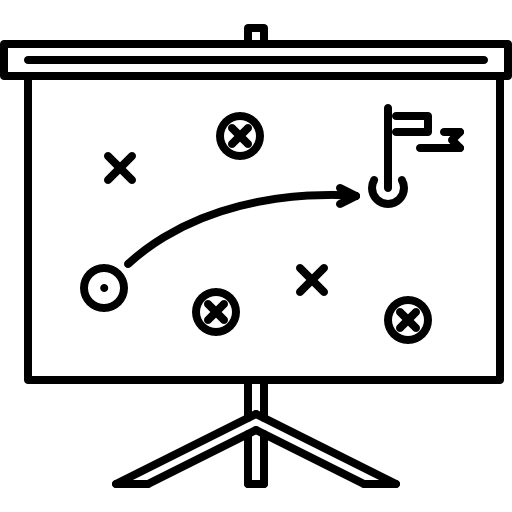
Solutions for every step of the revenue cycle, plus compliance, value-based care, and more.
Learn More
Maximize return on investment with highly accurate results and best-practice customer service.
Learn More
2023© The Valletta Group | infoREMOVE@thevallettagroupREMOVE.com
600 Century Park South, Birmingham, AL 35226 | (888) 874-7084
Privacy Policy | Terms and Condtions | Disclaimer
This site is protected by reCAPTCHA and the Google Privacy Policy and Terms of Service apply.
